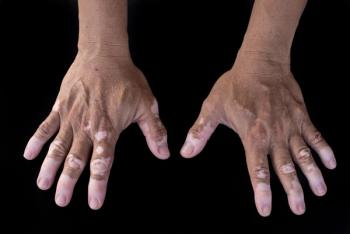
Six Surprising Ways COPD Can Affect Patient Health
These six medical conditions often accompany COPD, and providers should heed them as warning signs.
Chronic obstructive pulmonary disease (COPD) causes lasting lung damage even before symptoms show. By the time mild COPD is detected, patients already may have lost more than 40% of their small airways, found researchers at the
“Many people have undiagnosed COPD, so the importance of screening is greater,” says Timothy J. Scialla, MD, pulmonologist at Duke University’s Duke Asthma Allergy and Airway in Durham, North Carolina.
Scialla says six other medical conditions often accompany COPD, and providers should heed them as signs that COPD screening may be needed. “COPD is not just a disease of the lung,” he says. “It can affect your whole body.”
Here are the six conditions to watch for:
- Muscle weakness. Muscle fibers deteriorate, going from fast-twitch to slow-twitch fibers, and sometimes muscle atrophy. “The muscles become less efficient in exercise and especially in patients who are sedentary,” Scialla says. “That creates a vicious cycle: Patients are weak so they don’t move, and they don’t move so they get weaker.”
- Heart failure. COPD and heart failure are chronic, progressive disorders that curtail a major organ’s ability to meet the body’s demands. COPD lowers oxygen levels in the blood, which in turn can induce heart failure. The two conditions share many symptoms, including shortness of breath with effort. They also have common causes: smoking, inactivity, and systemic inflammation. “The heart and lungs are bed partners, living in the same area of your body,” Scialla says. “When one is struggling, the other has to strain to do its job.”
- Dementia. Smoking sparks not only COPD but also gradual mental decline due to low oxygen and high carbon dioxide levels, as well as blood vessel damage, Scialla says.
- Osteoporosis. COPD patients have a higher risk of bone brittleness and loss.
The National Health and Nutrition Examination Survey , which included 14,828 subjects aged 45 or older, noted a 16.9% prevalence of osteoporosis in COPD patients compared with 8.5% in subjects without coexisting COPD. Inflammation, smoking, and lack of exercise fuel both diseases, which also tend to be undetected in early phases.
Also, drugs used to treat COPD and acute exacerbations-corticosteroids and bronchodilators-impair the body’s metabolism of calcium and vitamin D.
This, in turn, hampers bone-building, say researchers from Pradesh, India, in a 2015 issue of the journal
Spinal breaks-known as vertebral compression fractures-can constrict lungs and their ability to function. Each break drops lung capacity by 9%, according to a 2007 University of Alberta, CA,
5. Depression and anxiety. “Which comes first, COPD or depression? I don’t know,” Scialla says. But depressed patients are less likely to exercise and more likely to stay indoors, thus decreasing their vitamin D levels, all contributors to COPD.
6. Lung cancer. Smoking, genes, and chronic lung inflammation contribute to both COPD and lung cancer, he says.
Newsletter
Get the latest industry news, event updates, and more from Managed healthcare Executive.






















































